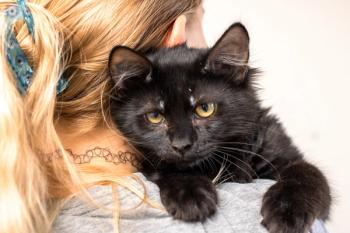
USDA confirms new avian influenza genotype in dairy cattle
Originally found mostly in wild birds and poultry, H5N1 clade 2.3.4.4b, genotype D1.1, was discovered in dairy cattle last month
The US Department of Agriculture (USDA) Animal and Plant Health Inspection (APHIS) National Veterinary Services Laboratory (NVSL) confirmed by a whole genome sequence the detection of H5N1 clade 2.3.4.4b genotype D1.1 in dairy cattle in Nevada. This genotype is commonly found mostly in wild birds and poultry, making it the first detection of this class in dairy cow.1
According to APHIS, the confirmation was a result of Nevada tracing and investigating, following an initial detection on silo testing under the USDA’s Milk Testing Strategy (NMTS). The Nevada Department of Agriculture and the USDA APHIS will work together to conduct additional on-farm investigation, testing, and gather additional epidemiological information to gain a better understanding of the detection, plus limit the disease from spreading further.
RELATED:
Up until this confirmation, all the previous detections of the virus in dairy cattle were HPAI H5N1 clade 2.3.4.5b, genotype B3.13, and infections have been widespread in the United States since March 2024, with more than 950 herds in 16 states affected.1 For H5N1 clade 2.3.4.4b infections, the Center for Disease Control and Prevention (CDC) confirmed 67 people in the United States were infected by this strain, with 23 of the cases associated with exposure to infected poultry, 40 infected through exposure to dairy cattle, and 4 remain unknown, with potential exposure to backyard flocks, wild birds, mammals, and other animals.3
Most human cases at this time were infected by genotype B3.13, but 1 person in the United States was confirmed with D1.1 in December 2024.2 The CDC has also announced 1 death associated with a H5N1 infection in the United States. The CDC shared that although the public health risk is low, it is watching the situation carefully as well as working with states to monitor people with animal exposure.3
Despite the detection, federal authorities will not change the USDA’s HPAI eradication strategy, and thanks the NMTS for facilitating comprehensive H5N1 surveillance of the nation’s milk supply and dairy herd. At this time, there are 38 states enrolled in the NMTS program, which is designed to increase understanding of how the virus is spreading in the United States, support the rapid implementation of enhanced biosecurity to decrease transmission risks to other livestock, and protect farmworkers through informing them of critical efforts to help lower the risk of exposure.
RELATED:
There will be a technical brief on the findings of this first detection of 2.3.4.4b genotype D1.1 in dairy cattle on the APHIS website and will post the sequence data on GenBank. Veterinary professionals can learn more on response efforts to H5N1 in dairy cattle on the USDA, CDC, and FDA websites. The AVMA will also provide professionals with up-to-date information on avian influenza and its epidemiology in the US.2
References
- APHIS Confirms D1.1 Genotype in Dairy Cattle in Nevada. Animal and Plant Health Inspection Service. Accessed February 12, 2025. https://www.aphis.usda.gov/news/program-update/aphis-confirms-d11-genotype-dairy-cattle-nevada-0
- New avian influenza genotype found in dairy cattle. American Veterinary Medical Association. February 6, 2025. Accessed February 12, 2025. https://www.avma.org/news/new-avian-influenza-genotype-found-dairy-cattle?utm_source=delivra&utm_medium=email&utm_campaign=todays-headlines-news
- H5N1 Bird Flu: Current Situation. Center for Disease Control and Prevention. 21, 2024. Accessed February 12, 2025. https://www.cdc.gov/bird-flu/situation-summary/index.html
Newsletter
From exam room tips to practice management insights, get trusted veterinary news delivered straight to your inbox—subscribe to dvm360.





